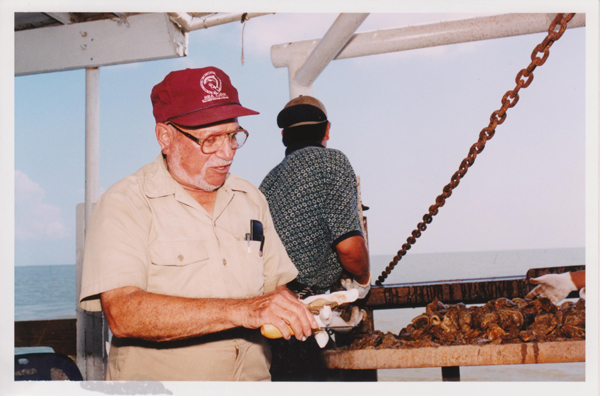Renowned Texas A&M University at Galveston oyster expert comments on red tide near Texas shores
TweetnoverNovember 3, 2011
(Galveston, TX—October 28, 2011) — Reddish brown algae blooms are coloring the coastline of Texas, and as a result, state officials have banned oyster harvesting. Known as Karenia brevis, red tide algae bloom can cause shellfish to be poisonous to humans. On Wednesday, the Department of State Health Services announced it was banning commercial and recreational harvesting of oysters, clams and mussels due to red tide concentrations near Texas shores.
Cooler weather can reduce the impact of red tide; however, since DSHS staff recently found low concentrations of the K.Brevis in the Houston Ship Channel, the Texas City Dyke, the Galveston Yacht Basin, San Luis Pass Bridge and Christmas Bay boat ramp, coastal waters are closed to the commercial and recreational harvesting of oysters, clams and mussels until further notice. Normally, the public can harvest oysters from Nov. 1 through April 30.
Texas A&M University Marine Biology professor and internationally-renowned oyster expert Dr. Sammy Ray, who first began his research with red tide in the early 50s, says red tides are more common now. He says there could be several reasons for the red tide.
“There is an alarming increase in the worldwide occurrence of red tide and there are several contributing factors to the growth of red tide,” he said. “There are more opportunities for these microorganisms to be spread through ballast water from ships that travel worldwide.
Dr. Ray explains that ballast water, which is taken on a ship for stabilization could contain the red tide microorganism, which is then spread with the release of the water.
In addition to ballast water, Dr. Ray commented on the impact of nutrients from estuaries and coastal waters through rain, groundwater, rivers, streams, waves and tides, which can feed the red tide organism.
He says when natural levels of nutrients like nitrogen from fertilizers and phosphorus from detergents help plants and animals grow and can keep coastal water bodies highly productive areas for fish and wildlife. However, imbalances of nutrients have been noted with an increase in red tide.
Dr. Ray says there are those who view this imbalance from the aspect of too many nutrients, while he focuses on what inhibits nutrient growth.
“There are those who claim that nutrient enrichment from rivers causes an increase in red tide,” he says. “I’m on the other side. I say it’s what inhibits the red tide from growing that’s the key to learning how to minimize it.
“Some rivers have more nutrient loads than others, he says. “So, what stops that? Its inhibitors like humic acid—acid caused by decomposition of organic matter such as leaves—which tie up toxic heavy metals. We know from early experiments at A&M that red tide can be sensitive to copper. This could provide insight into how to diminish it.
“Shipping, water temperature and nutrient balance affects the growth of red tide, but so do salinity levels,” he says. “We have dry periods with high salinity right now, because of the drought. And, the saltwater is invading the oyster nursery areas. With the right combination of water temperature and salinity levels, red tide prevails. Dr. Ray says with continued drought; red tide may expand.”
**TAMUG**
###
